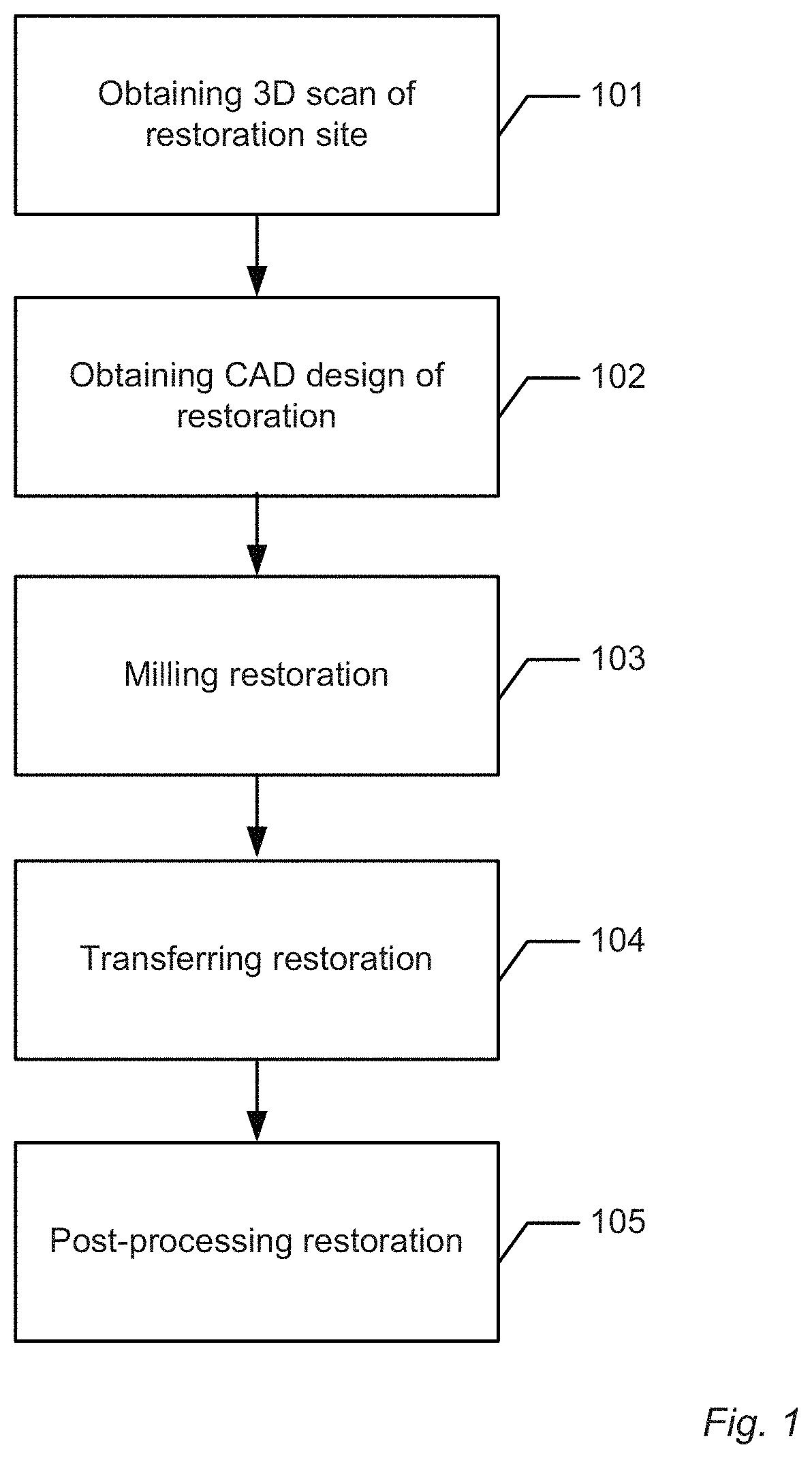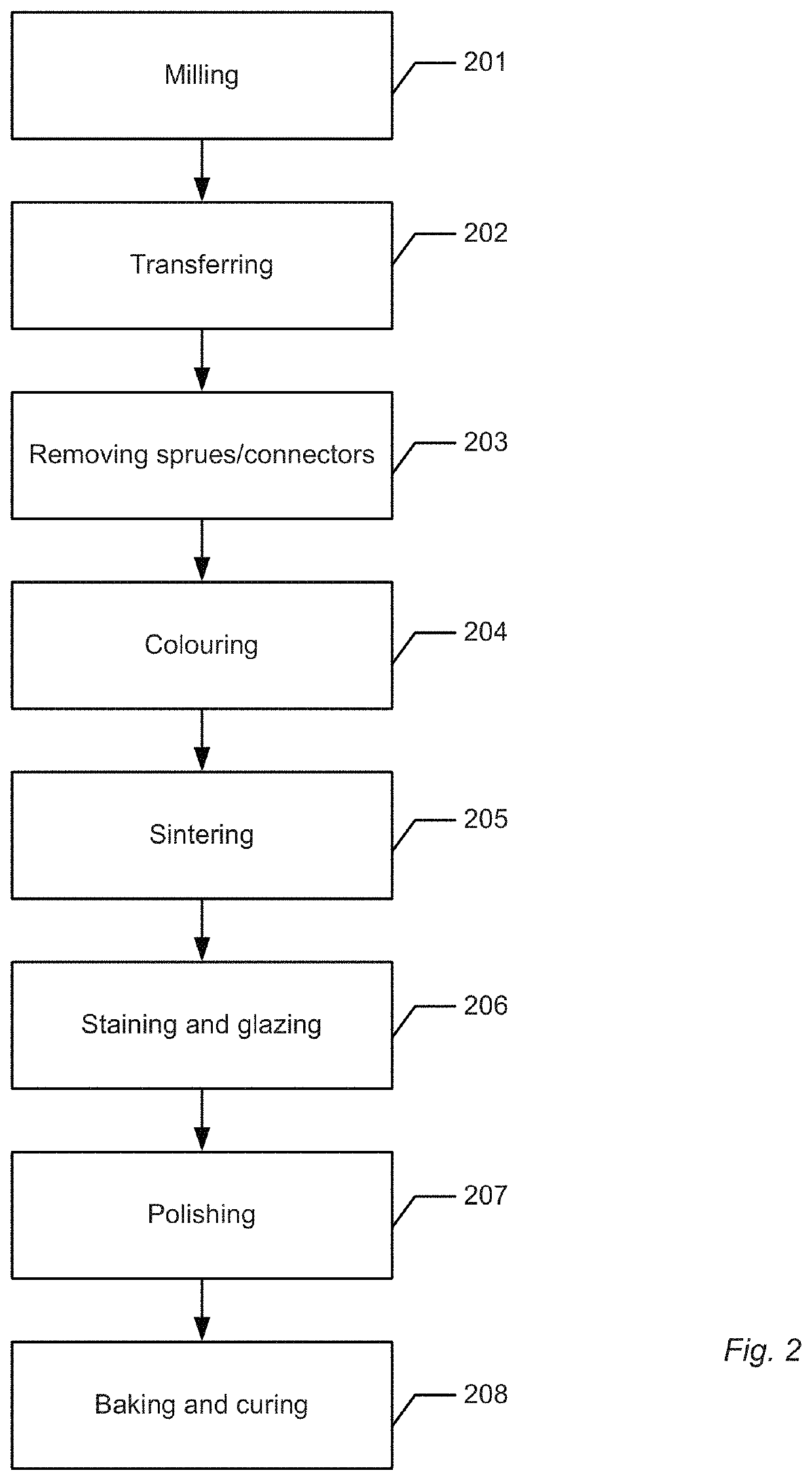Automated production of dental restoration
a technology of dental restorations and production methods, applied in dentistry, dental prosthetics, medical science, etc., can solve the problems of inability to produce a complete model of the object, the restoration milled from zirconium will shrink, and the zirconium or zirconium will not maintain its siz
- Summary
- Abstract
- Description
- Claims
- Application Information
AI Technical Summary
Benefits of technology
Problems solved by technology
Method used
Image
Examples
Embodiment Construction
[0153]In the following description, reference is made to the accompanying figures, which show by way of illustration how the invention may be practiced.
[0154]FIG. 1 shows an example of a method for manufacturing / producing a dental restoration for a patient.
[0155]In step 101 a 3D scan of at least a restoration site of the patient's mouth, where the manufactured dental restoration is adapted for fitting to the restoration site is obtained.
[0156]In step 102 a computer-aided design (CAD design) of the dental restoration is obtained.
[0157]In step 103 the restoration is milled from a material, where the restoration is milled both on the inside surface configured for fitting to the shape of the restoration site of the patient's mouth and on the outside surface, where the milling is according to the obtained CAD design.
[0158]In step 104 the milled restoration is transferred to a retention means providing a fixed known position of the restoration relative to a post-processing machinery, wher...
PUM
 Login to View More
Login to View More Abstract
Description
Claims
Application Information
 Login to View More
Login to View More - R&D
- Intellectual Property
- Life Sciences
- Materials
- Tech Scout
- Unparalleled Data Quality
- Higher Quality Content
- 60% Fewer Hallucinations
Browse by: Latest US Patents, China's latest patents, Technical Efficacy Thesaurus, Application Domain, Technology Topic, Popular Technical Reports.
© 2025 PatSnap. All rights reserved.Legal|Privacy policy|Modern Slavery Act Transparency Statement|Sitemap|About US| Contact US: help@patsnap.com



